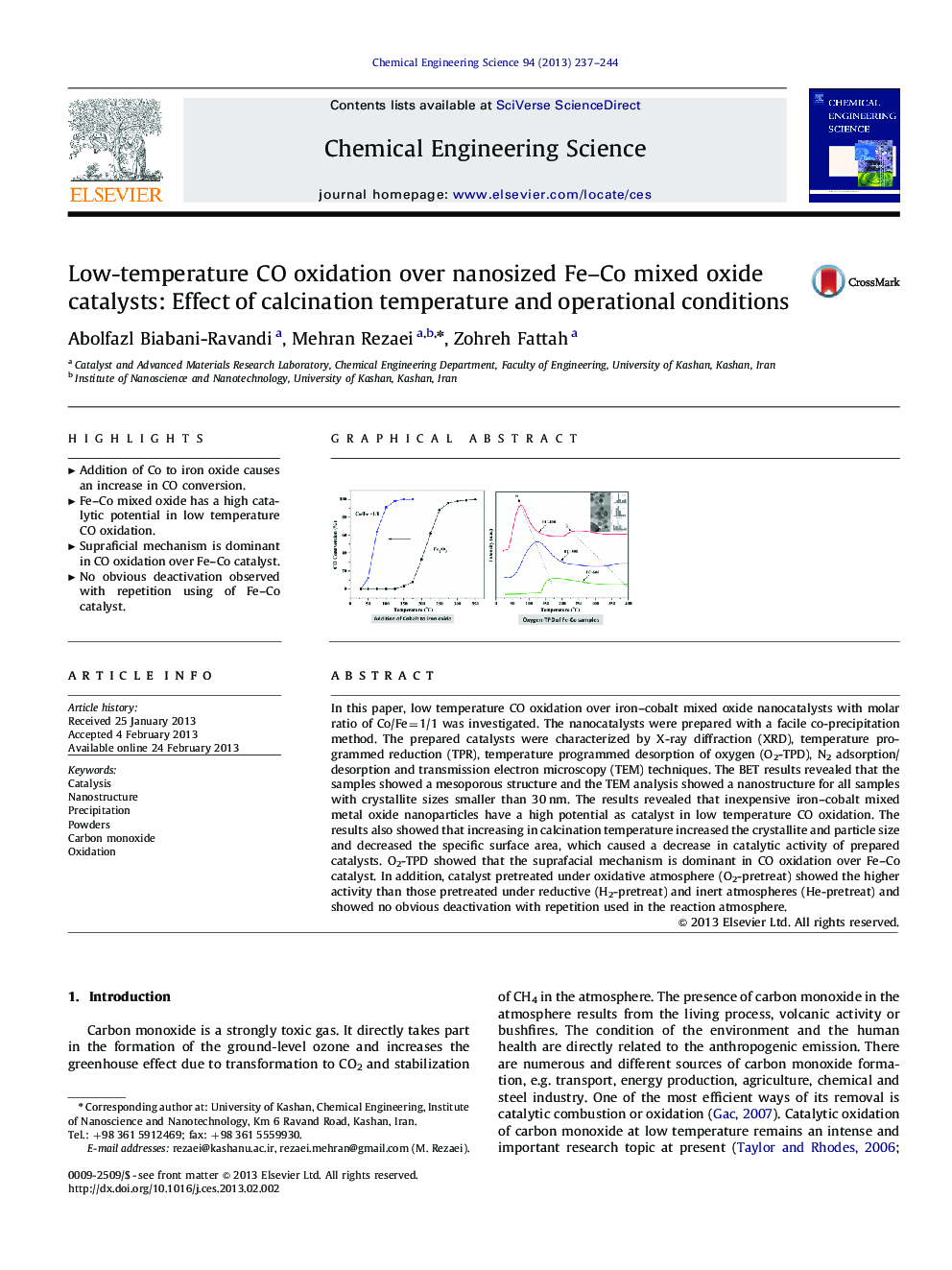| Article ID | Journal | Published Year | Pages | File Type |
|---|---|---|---|---|
| 155241 | Chemical Engineering Science | 2013 | 8 Pages |
In this paper, low temperature CO oxidation over iron–cobalt mixed oxide nanocatalysts with molar ratio of Co/Fe=1/1 was investigated. The nanocatalysts were prepared with a facile co-precipitation method. The prepared catalysts were characterized by X-ray diffraction (XRD), temperature programmed reduction (TPR), temperature programmed desorption of oxygen (O2-TPD), N2 adsorption/desorption and transmission electron microscopy (TEM) techniques. The BET results revealed that the samples showed a mesoporous structure and the TEM analysis showed a nanostructure for all samples with crystallite sizes smaller than 30 nm. The results revealed that inexpensive iron–cobalt mixed metal oxide nanoparticles have a high potential as catalyst in low temperature CO oxidation. The results also showed that increasing in calcination temperature increased the crystallite and particle size and decreased the specific surface area, which caused a decrease in catalytic activity of prepared catalysts. O2-TPD showed that the suprafacial mechanism is dominant in CO oxidation over Fe–Co catalyst. In addition, catalyst pretreated under oxidative atmosphere (O2-pretreat) showed the higher activity than those pretreated under reductive (H2-pretreat) and inert atmospheres (He-pretreat) and showed no obvious deactivation with repetition used in the reaction atmosphere.
Graphical abstractFigure optionsDownload full-size imageDownload high-quality image (148 K)Download as PowerPoint slideHighlights► Addition of Co to iron oxide causes an increase in CO conversion. ► Fe–Co mixed oxide has a high catalytic potential in low temperature CO oxidation. ► Supraficial mechanism is dominant in CO oxidation over Fe–Co catalyst. ► No obvious deactivation observed with repetition using of Fe–Co catalyst.
